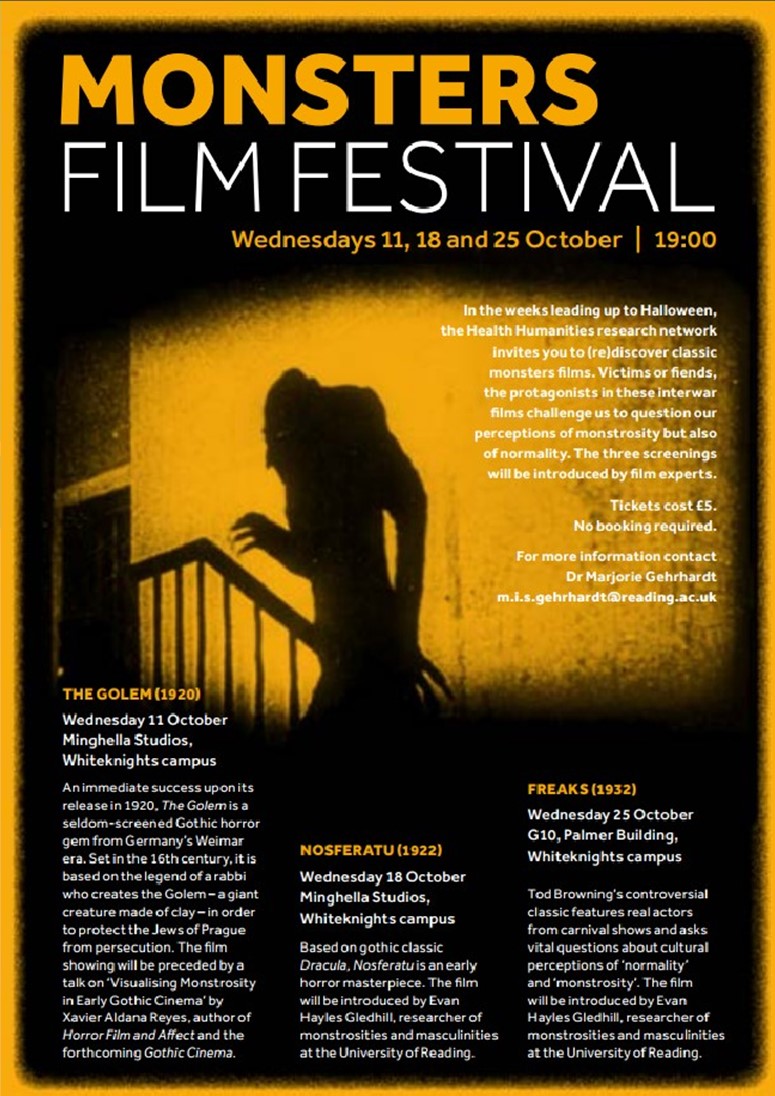What is a monster? For centuries science has sought to understand the concept, art has sought to portray it, and popular entertainment has sought to exploit it. Inspired by the University’s Cole Museum of Zoology, an early twentieth-century collection that includes interesting ‘mutants’ and ‘mutations’, Dr Marjorie Gehrhardt wanted to explore how ‘different’ bodies have been represented in the past and how art impacts our reactions today.
Working with Dr Andrew Mangham she curated a short season of 1930s ‘monster’ movies at Reading Film Theatre, the independent art cinema on the University campus. RFT holds weekly screenings for students and local people, so this was an ideal way to involve a public audience in discussions about physical difference and research. In the weeks leading up to Halloween, three classic monsters films were screened – The Golem (1920), Nosferatu (1922), and Freaks (1932) – with specialist introductions to lend context. Expanding the series with a public lecture by poet Kelley Swain and anatomical sculptor Eleanor Crook, added a mixed-media layer to the events.
What began as a relatively modest project has laid the groundwork for future research collaborations and film seasons. The events resonated with audience members, demonstrating how bringing together film fans, academics and artists can facilitate a wider debate on how we interpret difference and move to a more equal society.
Partner: Reading Film Theatre
Judges’ comment: “This was an imaginative and effective project, to bring research to life through film and discussion.”
Shortlisted for the University Research Engagement and Impact Awards 2018
First published: June 2018

